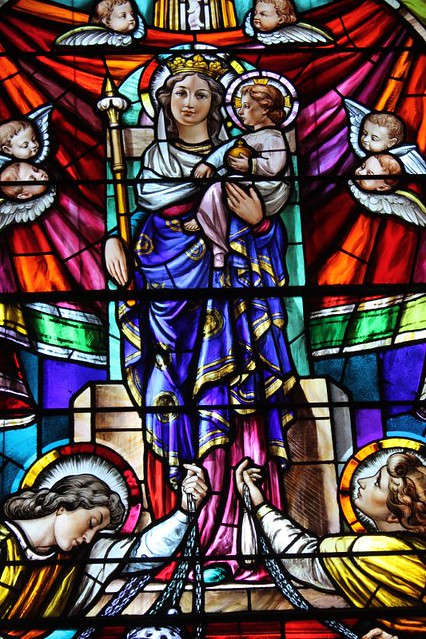When the Second World War broke out the government of the day in Canada decided that some Canadian citizens of European and Japanese extraction were not merely Canadians like any other but in fact "enemy aliens" and decided to assemble them and intern them in what can only be referred to as 'prisoner-of-war detection camps', in some instances incarcerating whole families, in others separating men from their families, leaving women and children destitute, confiscating properties as due punishment and humiliating Canadian citizens for no other reason than their ethnic heritage. This, in a country built on immigration from all corners of the world.
 |
| Vitrail de Vincenzo Poggi Stained glass |
He is long dead; his art endures. And so does Canada's shame.
When I was a child I recall visiting a house next to where my parents rented an upstairs flat in another house on Manning Avenue in Toronto. There, an Italian family lived. It was where I was first confronted with the magic of a Christmas tree in full-lit splendour. It was where I saw an old, very old woman in a rocking chair knitting, knitting, knitting. She was aiding the Canadian war effort, knitting copious numbers of khaki-wool caps, mittens and scarves. Beside her was a large carboard box filled to overflowing with her product.
As a Jewish child I was mesmerized by the fantasy of Christmas exemplified by the gorgeously-dressed automatons in Christmas scenes that blazed in full light and colour and action in store-front windows of department stores like Eaton's and Simpson's. Those stores devoted several floors in their retail businesses to displays of Christmas in vintage form, replete with angels, Santa-elf-helpers, endless snowy Christmas landscapes and lavishly-festooned trees. It was a winter wonderland of the highest, imaginatively creative order.
I never sat on Santa's lap, but our three children did once, when they were young, all three grouped around Santa, the youngest on his lap.
Famously, during the First World War, German and French combatants came out of their trenches in a shared moment of Christmas nostalgia and goodwill, to celebrate Christmas together for that one, singualr day. In Canada, during the Second World War, Canadian citizens deemed 'enemy aliens' languished in concentration camps on Christmas Day.
 Vitrail de Vincenzo Poggi Stained glass
Vitrail de Vincenzo Poggi Stained glass
No comments:
Post a Comment